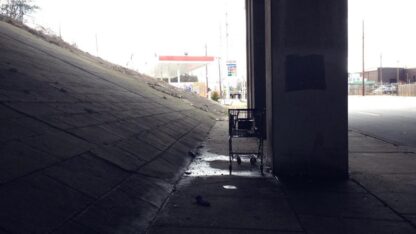Belinda Jones had to deal with her landlord saying she owed back rent.
Then there was the sewage regularly bubbling up in the sinks and drains of her southwest Atlanta apartment. A rug was filled with mold. Residents of the apartment complex, citing their constant fear of violence, recently pointed out bullet holes in outside walls and stairwells.
At the same time Jones was having these issues, the family faced considerable medical challenges. Her daughter, Oni, 15, has Crouzon syndrome, a genetic disorder characterized by the premature fusion of certain skull bones. Oni has had more than 40 surgeries.
That surgical work, though, paved the way for the family to get help with the apartment problems.
The family was connected to the Health Law Partnership, a collaboration among Children’s Healthcare of Atlanta, the Georgia State University College of Law and Atlanta Legal Aid. The HeLP program assists low-income families with a vulnerable child patient who are having trouble with benefits, housing, education support or other issues.
It’s one of hundreds of medical-legal partnerships in the United States that address such family problems while also providing medical and legal education to students, social workers and medical professionals.
Navicent Health in Macon is now running a partnership.
The HeLP program at Children’s Healthcare, formed in 2004, was the first in the state. It was the brainchild of attorney Sylvia Caley while she was working for Atlanta Legal Aid.
Caley says now that she learned households run by single women with children “were not receiving adequate support. Many children had significant health issues.”
After trying unsuccessfully to launch a program at another hospital, she persuaded Children’s Healthcare to take on the medical side of the equation.
Along with helping families with children, its goals are to educate lawyers, physicians and social workers on family law problems; to conduct research; and to engage in policy advocacy. Caley, while teaching health law at GSU’s College of Law, has students joining the legal effort.
Learning As They Help Others
Caley, who recently retired, called the program ‘’a labor of love. It certainly has been unbelievably rewarding to me.’’
HeLP senior attorney Pam Kraidler says housing is among the top problems that the program attorneys tackle.
Kraidler, who helped Jones, says the family’s apartment situation was ‘’pretty bad.’’
Oni had received a tracheotomy, which exposes the inside of the neck to the air, Kraidler says, but the girl and her family were living in a place in which raw sewage — human feces — was coming up through a drain.
The legal team helped clear up the rental finances – Belinda in fact didn’t owe money – and got the moldy carpet removed and the plumbing eventually fixed, though mold still lurked underneath a ledge in the bathroom.
Dr. Robert Pettignano of Children’s Healthcare, who’s medical director for HeLP, says 400 to 500 such cases are referred to the program each year.
He points to housing problems such as mold causing severe child asthma attacks, and a lack of air conditioning that can cause medical crises for some people with chronic conditions such as sickle-cell anemia.
“As pediatricians and physicians, we want the best for our patients,’’ Pettignano says.
Medical students working with the program learn about socioeconomic problems that low-income families have to face, he adds.
The HeLP program has achieved real collaboration between doctors and attorneys, says Pettignano, who notes that the two professions “don’t always get along.”
Belinda Jones and her daughter recently moved to a new apartment and, she says, “a much better situation.’’
If it wasn’t for [Kraidler and HeLP],’’ Jones says, “I’d still be going through the mold and mildew” and other problems.
Andy Miller is editor and CEO of Georgia Health News







